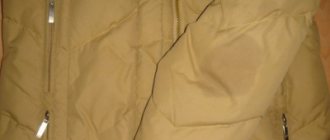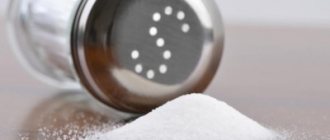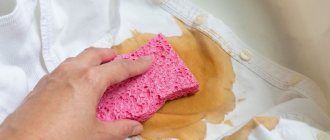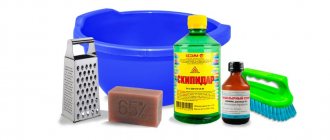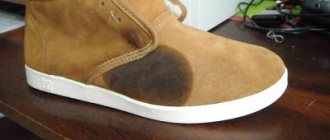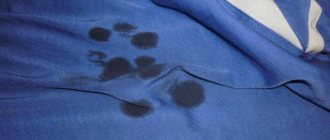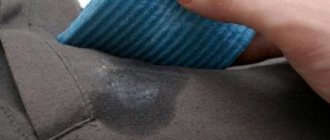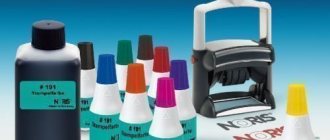Do you know how to remove a greasy stain from a Bolognese jacket so that not a trace remains? Meanwhile, this information is very relevant! Who doesn't have a bologna jacket today? Due to its high practicality, bologna is worn by everyone - both adults and children. The material looks presentable, does not blow, does not get wet easily, is light, smooth.
However, it has a significant drawback - stains are very visible on it, and if rinsed poorly, stains often remain. There is good news - any stains can be washed off, and to ensure that there are no streaks left on the fabric, it must be rinsed thoroughly.
Traditionally, the worst stains are traces of fat and oil. It’s great if you act promptly - the probability of removing such a greasy stain from a Bolognese jacket is very high. There are many ways to quickly get rid of the problem.
But don’t rush to get upset if you couldn’t quickly get rid of the flaw. In this article we will tell you how to remove an old greasy stain from a bologna jacket, even if it remains after washing with stain removers. Here, by the way, we will tell you the pros and cons of bolognese fabric.
Preparing your jacket for removing grease stains
The first step is to inspect the item and understand the scale of the work. If there is a stain of a different origin on the jacket, then you need to select suitable removal methods for it.
An important step is to read the label, which indicates the possibility of machine washing, use of powder and ironing mode. Before treatment, it is also necessary to empty the pockets so that nothing falls out during the procedure. In addition, you need to clean the jacket from dust and easily removable dirt.
Next, you should prepare tools for removing stains from the product: clean rags, soft-bristled brushes and paper napkins.
Attention! When cleaning clothes with chemicals or home remedies, you must wear rubber gloves to protect your hands. If you work with alcohol solutions or acids, you need to open windows or be in the fresh air.
Place cardboard or thick cloth under the surface to be treated to prevent the cleaning agent from being absorbed into the clean areas of the product.
Basic cleaning rules
Main recommendations:
- For washing, use a soft cloth, brush or cotton wool.
- Fresh marks can be treated with talcum powder or dry wipes.
- The oil stain must be removed with a dry cloth before using detergents.
- You need to move in the direction from the edges to the middle. This helps the contamination from spreading and becoming larger.
- The procedure should be started immediately, as the stain forms - it will be easier to wash off and the result will be better.
- Processing should be done from the inside out. Under the jacket you should put a small board covered with soft fabric.
Recommendations for removing fat
When using flammable products (acetone, alcohol, gasoline), the solutions should be kept in a cool, dark place so that they are not exposed to heat. Also, for safety reasons, they should be kept out of the reach of children.
You should start with weak methods, since aggressive methods can harm the tissue. As a rule, the stains are first washed with a solution of laundry soap - if this does not work, stronger products are used.
Removal of greasy marks depending on the material
It is necessary to determine the type of fabric before starting the procedure, since there are different ways to remove an oil stain from a jacket. One method may help, but another will harm the appearance of the thing.
Bolognese fabric
This material can be easily cleaned with washing powder: 3 tbsp is required for half a liter of water. l. facilities. The solution is applied to a sponge or brush, which is used to rub the oil stain.
Attention! If there are tears or abrasions at the site of contamination, it is recommended to take a soft cloth so as not to tear the fabric.
The powder should only be used for local stain removal. To fully wash Bolognese items, you need to purchase a gel, as it does not settle in the fibers, does not cause allergies and leaves a pleasant aroma on the jacket. For advice on choosing a product, you can contact sales consultants in the departments of household chemicals.
Grease stains can be removed with potatoes - you need to cut off a small piece, put it on the footprint and wait for it to dry. After this, it is enough to wash the product.
Sintepon
Washing padding polyester jackets follows certain rules:
- The product should not be soaked, as the insulation may become crumpled and deteriorate.
- You should also remove the fur to avoid getting it dirty. If a full wash is expected, all buttons and zippers must be fastened.
- The powder is not suitable for removing stains from padding polyester jackets because it is absorbed into the filling, causing it to clump and not straighten out when dried.
To remove greasy stains, you need to add 1 tbsp. l. gel in 500 ml of water, stir the solution and moisten the sponge. It should be used to wipe away stains on the padding polyester, and at the end of the procedure, rinse off the product with a damp cloth and dry the product.
Chalk also helps - you should grind it and prepare a paste by adding a little water. The product is applied to the greasy stain, then wiped with laundry soap.
Polyester
The first thing you need to do is try to wash off the dirt with soapy water. It is recommended to choose a product with a high percentage of fatty acids (the concentration is indicated on the bar itself).
A mixture of soap and salt works better, but if the product has torn or worn areas, grains of salt can act as an abrasive - and this can lead to tearing of the fabric. To prevent such cases from happening, you should dissolve the ingredients well and use warm water.
To remove stains from polyester, a dishwashing detergent such as Fairy can be used. It is recommended to choose a gel without color so as not to stain light-colored fabric.
Raincoat
1 tsp helps in removing greasy stains. ammonia, mixed in a glass of water. Moisten the cotton wool and rub the stain, leaving it to dry. As a rule, the procedure is repeated several times.
One of the simplest methods, which does not require preparing a solution, is to iron the stain with a hot iron. Place a soft napkin or cotton cloth on both sides of the treated area to absorb the fat.
When using alcohol or gasoline, you must proceed sequentially:
- First, the contour of the spot is processed.
- Then the paper or cloth is wetted and the blot is rubbed over. In this case, you need to move smoothly from the edges to the center of the contamination.
- At the end of the procedure, the area is washed with soapy water.
Attention! You need to choose gasoline without impurities, for example, from lighters. The alcohol should also not be colored, otherwise stains will remain on light-colored fabric.
Effective means
Removing a greasy stain on a jacket, especially an old one, is very difficult. There is always a risk of incomplete removal of the mark on things. But with the right approach and promptly taken measures, the chances of success increase significantly.
The stores offer a large number of special chemicals that effectively remove even the most difficult stains. But instead of wasting time looking for them, it is better to use materials that are definitely available in every home.
You can get rid of pollution with high efficiency using:
- ammonia,
- mustard powder,
- turpentine,
- refined gasoline
It should be noted that the use of such aggressive compounds can negatively affect the quality of outerwear. During use, be sure to follow precautions and the indicated dosages.
If there is none of the above in the house, more popular means will come to the rescue:
- liquid dishwashing detergent,
- salt,
- vinegar,
- onion,
- lemon,
- soda,
- laundry soap,
- starch,
- toothpaste or powder.
Important! Old stains may not be cleanable the first time. Therefore, you can try washing your clothes again.
If the product cannot be washed, then you can try to remove the fat using high temperatures. To do this, place a white sheet of blotting paper on the blot and run a hot iron over it. The fat will melt and be absorbed into the leaf.
Rules for soaking and washing
If you plan to machine wash, you should purchase a special powder whose label indicates the possibility of automatic processing. A stain remover and conditioner are also added to give the product a pleasant aroma.
Suede and leather jackets do not tolerate hot temperatures and spin cycles. They need to be dried away from heat sources.
We recommend:
How to stretch jeans at home
Attention! Machine washing of down jackets is prohibited, as the filler gets loose and loses its shape.
Pre-soaking prevents stains from spreading throughout the fabric and makes cleaning much easier. It is indicated in the case of hand washing, since it is quite difficult to remove stubborn dirt with your hands. It is recommended to wash stains in advance - laundry soap and gel are suitable for this purpose. You should not squeeze or twist things; it is advisable to hang them on the balcony and let the water drain.
Traditional methods
Many folk recipes work no worse than special chemicals for removing fat from clothes. For the method to work, you need to monitor the concentration of the solutions and not go beyond the stain.
Powder and vinegar
Regardless of the type of fabric, a mixture of table vinegar and powder quickly removes old greasy stains without harming the material. You need to mix 2 large spoons of detergent and 0.5 liters of clean warm water, then moisten the brush and wash away the dirt with it. Next, take vinegar and soak a soft cloth in it, which should be used to wipe the treated area on the jacket. After rinsing, it is enough to wash the product with conditioner to get rid of the pungent odor.
Old grease stains should not be treated in hot water, as dirt is better absorbed at high temperatures.
Onion and citrus juice
You should squeeze the juice directly onto the dirt and wait until it dries. The stain should fade or disappear completely, but there is no need to wash off the product. After processing with onions, a pungent odor remains, so it is recommended to wash the product or its area with conditioner and hang it in fresh air.
If you don’t have these products on hand, you can use citric acid, but before use it should be dissolved in water.
Attention! Citric acid is suitable for light-colored jackets, and onion juice is suitable for dark ones.
Talc
Using talcum powder, you can remove greasy stains from both a jacket and other items.
You need to pour a handful of powder into a small amount of clean water and stir until it becomes a paste. The product is applied to the stain and left for 5 minutes. Don't go beyond the stain as it can spread the grease into clean areas. At the end of the procedure, the talc should be shaken off and the treated area wiped until the pulp is removed.
You can use chalk instead of the product, but you need to grind it to make a paste. Then the product is applied to the stain and rubbed in with a soft bristle brush, after which it should be removed.
Soda
Baking soda can be mixed with water to form a paste and applied to the stain. If the method does not help, it is repeated several times. A stronger recipe is also used: 1 tsp. soda, 1 glass of water and 2 tbsp. l. ammonia. The stain should be rubbed until it disappears completely, and then washed with soapy water.
If you mix soda, salt and laundry soap in the form of a gel (in a ratio of 2:2:1), you will get an effective remedy for greasy stains. As a rule, it is applied before washing to facilitate the removal of dirt, and the mark must be treated on both sides. The product is suitable for both white and dark jackets.
How can you tell if a stain is greasy?
First, let's figure out how to tell if a stain is actually greasy. This is very important, because all the recipes given in the article are designed to remove this particular type of contamination. If you have non-greasy, oxidized or other stains on your jacket, our advice, unfortunately, will not help.
- A fresh greasy stain is visually darker than the base material;
- Old - looks like a darkened matte area of fabric;
- The color is uniform, without changing intensity towards the edges or center;
- There is no change in shade in favor of red, blue or yellow. In other words, the color of the grease stain remains in its original color range, just 5-6 tones darker.
